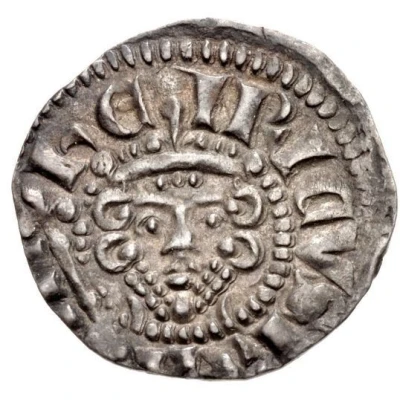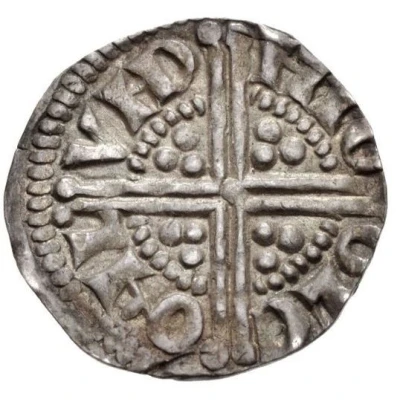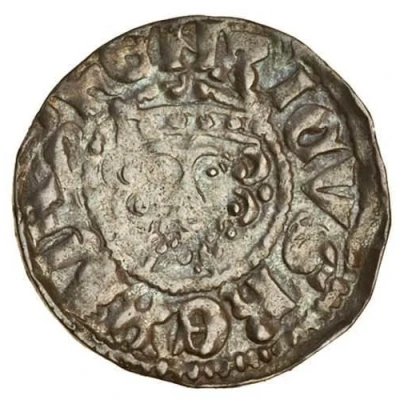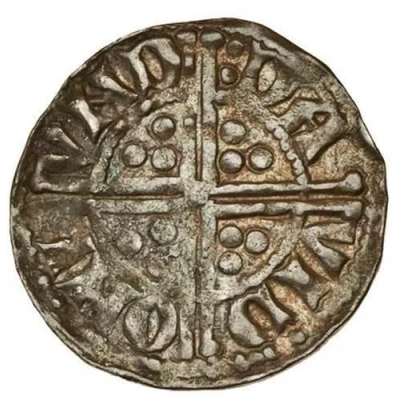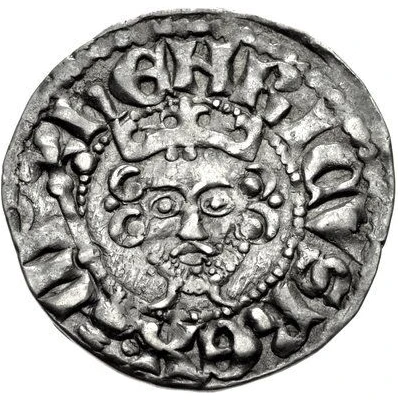
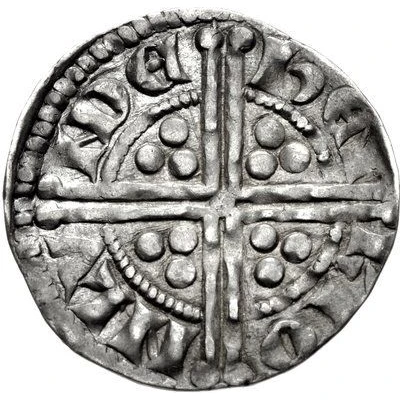

© Classical Numismatic Group, Inc.
1 Penny - Henry III Long Cross type; class 5d ND
1256 year| Silver | 1.34 g | 18 mm |
| Issuer | England (United Kingdom, British Overseas Territories and Crown Dependencies) |
|---|---|
| King | Henry III (1216-1272) |
| Type | Standard circulation coin |
| Year | 1256 |
| Value | 1 Penny (1⁄240) |
| Currency | Pound sterling (1158-1970) |
| Composition | Silver |
| Weight | 1.34 g |
| Diameter | 18 mm |
| Shape | Round (irregular) |
| Technique | Hammered |
| Demonetized | Yes |
| Updated | 2024-10-08 |
| Numista | N#323415 |
|---|---|
| Rarity index | 97% |
Reverse
Legend around voided long cross, with central pellet, triple pellets in quarters.
Note: varieties exist (see below)
Script: Latin
Lettering: hЄN RIO NLV NDЄ
Translation: Henri of London
Comment
House of Plantagenet (1154-1399), Henry III (1216-1272), Long cross coinage (1247-79), Phase III (Post-provincial), Class 5d.No mintmark, struck at the London, Canterbury and Bury St Edmunds mints, c.1256.
Varieties exist:
Sp#1370 Class 5d1 Completely new and very coarse bust with crude central fleur and half fleur ends often with unusual mint spellings;
Sp#1370A Class 5d2 As above but bust is more realistic and less crude;
Sp#1370B Class 5d3 The 'Beri' type; much neater and more pleasing, central fleur has distinctly pointed ends.
For more details visit Rod Blunt's website here.
By the middle of Henry's reign the Short Cross coinage in circulation was in a poor state and, in 1247, a new coinage was ordered with the cross on the reverse extended to the edge of the coin in an attempt to prevent clipping. The earliest coins (1a) showed the names of neither the mint nor the moneyer. Class 1b includes the name of the mint and from Class 2 onwards all coins show the name of both the mint and the moneyer.
Interesting fact
One interesting fact about the 1 Penny - Henry III (Long Cross type; class 5d) ND (1256) coin from England is that it was made of silver, which was a common material for coins during that time period. However, it's worth noting that the silver content of the coin is not very high, at only 1.34 grams. This is relatively low compared to other coins made of silver, and it's an interesting fact that highlights the historical context of coin production during that time.
